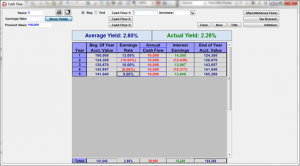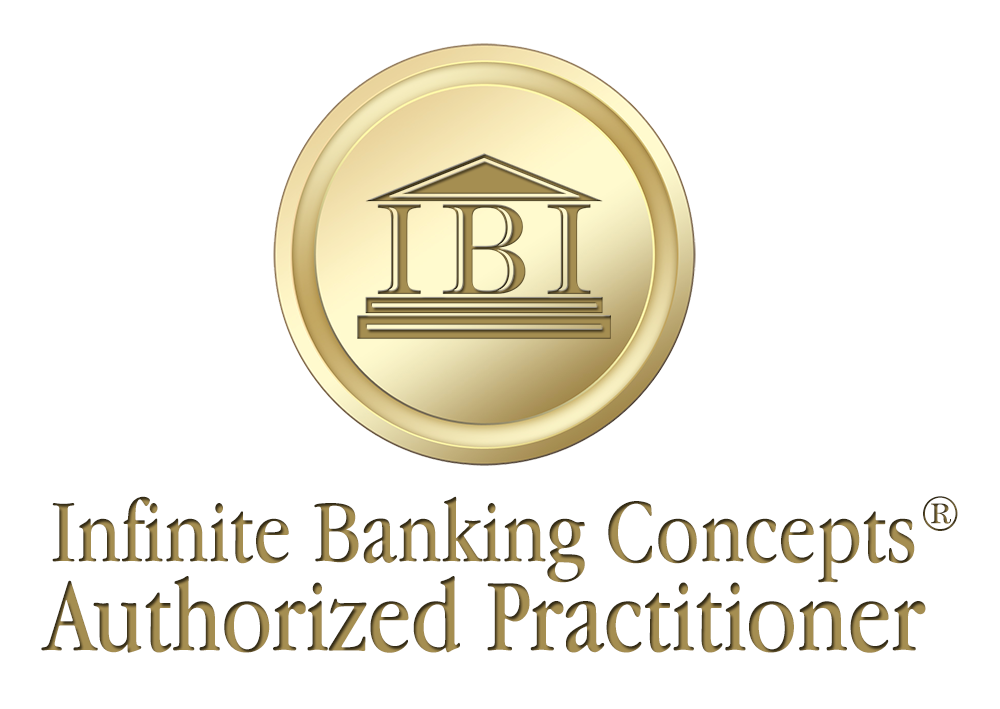Choosing the Right Life Insurance for the Infinite Banking Concept.
There are those out there that would and do promote using Universal Life policies for IBC. In stead of taking the time to write out a completely new blog, I am going to repost a great article that my friend Todd Langford wrote a while ago. He is one smart guy and very analytical. In his article, he lays out ten reasons to not buy these policies let alone try to use them for IBC. Without further verbage here we go…..
Insurance companies have put numerous pages on the front of Equity Indexed Universal Life (EIUL) illustrations that describe the issues below, but most people (by design) will not take the time to read and understand what these pages are saying. I would encourage you to read those pages thoroughly before depending on an EIUL policy to increase your assets or protect your family. Similarly, Universal Life (UL) and its cousin Variable Universal Life (VUL) have some of the same problems so I’ve spelled out the issues below and placed an * next to the ones that are specific only to EIUL. As stated earlier, all Universal Life policies are a side fund (money marketor regular UL, mutual fund-like separate accounts for VUL, and index fund-like accounts for EIUL) plus annually renewable, or one year increasing premium term insurance for the death benefit.
#10 Internal costs are not guaranteed
#9 Mortality charges are not guaranteed
#8 Market drops cause double pain
#7 Late premiums kill any guarantees
#6 Dividends from the index don’t get credited*
#5 Participation ratios are often less than 100%*
#4 Returns are usually capped at various interest rates*
#3 Guarantees are not calculated annually*
#2 All of the above can be changed by the company
#1 The risk is shifted back to the insured
Now, let’s look at each of these individually and tell the whole truth about the matter.
10. Internal administration fees charged against cash value on any type of Universal Life policy and shown on illustrations are run under current expense levels but those can change at the discretion of the company. Since the insurance company uses this money to run its operations, as prices of office supplies and real estate go up, they may choose to adjust these internal costs after you have bought the policy.
9. Mortality changes, what the insurance company charges for the death benefit are removed from the cash value or paid by premiums. In UL, these pay for annually increasing term insurance costs. This is true for any type of UL, no matter what the side fund is invested in. The cost for this one year term insurance can be changed at any time.
8. Market drops affect the side fund negatively no matter what the side fund is invested in. Since the death benefit is comprised of the One Year (or annually increasing) Term Insurance plus the side fund, any market drop causes double pain. Markets can drop regardless of whether they are supported by stocks or money markets. When the side fund is reduced by a drop in the market or current interest rates, it now has less value so more Term Insurance must be bought to make up the difference which further reduces the side fund. Consequently you have double pain; less cash value and higher costs.
7. Any late premiums remove any guarantees in the policy. In most UL policies, even if the premium is finally paid, once it is late, the insurance company is off the hook for supporting any guaranteed premiums, cash value amounts or death benefits. In many cases, the insured may not even know that a premium was late and that the guarantees have been forfeited. Thinking about the time frame of a 50 year policy paid monthly (600 payments) ask yourself what the likelihood is of a mistake being made by the premium payer, their bank, the post office, the insurance company clerks or anyone else along the way?
6. * Equity Indexed Universal Life policies provide the policy holder no credit for any dividends from the stocks making up the index. The side fund of an EIUL isn’t actually invested in the index; instead the index is used to determine the gross crediting rate for the side fund. If money were actually invested in the index, the investor would get both the change in Net Asset Value (whether up or down) AND the dividend income. However, in the case of EIUL, only the change in value of the index is the determining factor and the dividend is left out of the calculation entirely.
5. * Participation ratios are often less than 100%. As mentioned directly above, the side fund is not invested directly in the index and many insurance companies only credit a certain percentage of the increase in the market. Known as the participation ratio, this is often reported at 80% or less meaning you are getting only 80% of the increase in the market.
4. * Capping returns in order to keep high returns in the market from crediting too much to the side fund is a strategy many insurance companies use. The maximum return they’ll give credit for may be at a certain percentage rate even though the index may have generated a higher percentage rate.
3. * Guaranteed minimum returns are not always calculated annually. Most EIUL policies have a guaranteed minimum return so that if the index drops below this rate, the insurance company will still credit at the guaranteed minimum rate. However, with some policies this guarantee is not applied annually but instead over an “indexing period” which could be 5-10 years. So you could have negative years in the index (below the guaranteed minimum rate) which would be applied to the side fund. This would cause a further reduction of value in excess of the guaranteed minimum rate in one particular year and as long as the overall average rate for the entire indexing period is not less than the guaranteed minimum rate, this would still count as meeting the minimum.
For example, if the minimum guaranteed rate is 2% inside a 5 year indexing period, you could have crediting rates of +13, -10, +10, -8 and +9% which would validate the promised guarantee because it would average more than 2% per year over the 5 years. The implication is that you cannot have a negative return, but as shown in the example below, you can have a negative return as long the guarantee is not calculated annually.

You’ll notice another example below of the same interest rates, but with $100,000 of existing value instead of $10,000 per year of cash flow into the account.

2. At the discretion of the company any of the above factors can be changed at any time for the benefit of the company even after the policy has started. This is really one of the scariest aspects of all types of UL. There is no way to calculate what the outcome might be. Even if you analyzed the policy under the current structure and found it to be a viable tool, future changes could cause future problems.
1. Where as typically the point of all insurance purchased is to shift the risk from the insured to the company, all types of UL shift the risk backwards or from the insurance company to the insured.
With a mutual life insurance company, a whole life policy gives you a share of the entire profits of the company via dividends. The carrot being sold with EIUL is that it might exceed the return of a whole life policy. Yet this begs the question: How could the insurance company pay out more than the profits of the company and still be in business?
It has been explained to me that the insurance company buys options in the market to cover the risk of potentially having to credit any portion of high market returns in the index that exceeded their general portfolio rate to policy holder cash values. If this was a sound investment strategy, why wouldn’t the insurance company use this strategy on their overall portfolio? I think the insurance company knows that the stock market is going to under perform their portfolio rate over time. This could reduce EIUL profits and increase the profits of the company, which then get distributed as dividends to whole life policy owners.
As a whole life policy owner, I should be pleased that EIUL could contribute additional profits to the company which might increase dividends to Whole Life, my concern is that EIUL policies are going to create a detrimental effect on the life insurance industry as a whole. I believe this may be the next major blight on the industry since under funded Universal Life (UL) so heavily promoted in the 1980’s. The unfortunate outcome is that any negative media affects the entire industry because the media doesn’t differentiate between the new faulty products and the old tried and true whole life products that have been around for close to 200 years. As we know, the biggest danger with negative press is that is causes panic and the people will think the entire life insurance industry is bad and many perfectly structured whole life policies could get cancelled to the detriment of the policy holder and their family, just like what happened in the 1980’s.
Remember #2 above, since the insurance company has the ability to change #10- 3, they can always keep the Universal Life policies from outperforming their portfolio. Why would I want to take the safe portion of my assets and the protection of my family and expose it to risk? Doesn’t that defeat the whole purpose of insurance? In my mind, I buy insurance and shift the risk to the insurance company, because they are experts at mitigating that risk and storing the cash to support it.
If you are seriously considering purchasing an EIUL product, please make sure you read and understand all the risks you and your family are assuming. Because of the complexity and numerous moving parts for this product, many of the people selling it that I’ve spoken with don’t even understand it themselves. For me, I prefer a number of simple, guaranteed, tried and true whole life policies. These protect my Human Life Value and store my cash in the most efficient manner I know.











Leave a Reply
Want to join the discussion?Feel free to contribute!